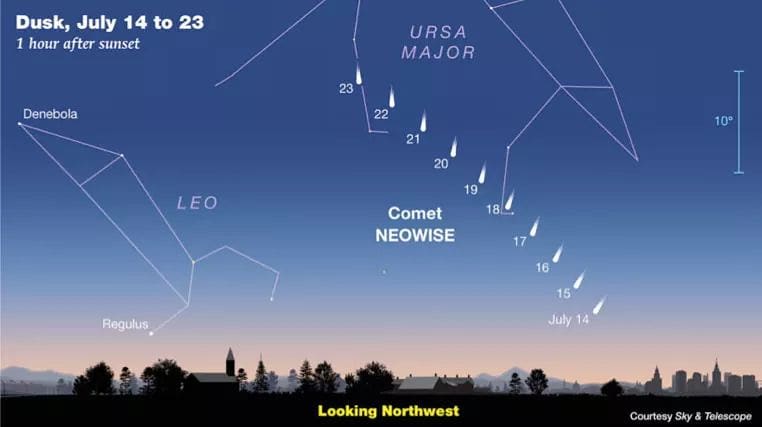
To say comets are a rare sight in one's lifetime would almost be an understatement. While the orbits of these space travelers can range from several years to several million years, many just don't come close enough for us to see. Which is why eyes should be skyward in the coming days and weeks.
The comet NEOWISE, a newly discovered one, is currently streaking past Earth, and has already yielded some breathtaking images this past week. The newcomer was spotted back in March during a NASA mission by the telescope with the same name. The intent of the mission was to find as many near-Earth asteroids as possible, in order to rule out any that could potentially be dangerous to the planet. Comets are different from asteroids in that they have an atmosphere surrounding their central nucleus.
So what are comets and why do they create such stunning shows in the sky? First, they are small, icy bodies that often contain matter from the origin of our solar system. They release gases as they approach the sun, creating a visible debris tail called a coma. This is what makes them so noticeable in the sky, with a dust-like haze behind the head of the comet. Their sizes range from a few hundred feet to dozens of miles wide. NEOWISE is approximately 3 miles across, putting it on the larger end of the spectrum.
Recently, the comet has only been visible across the tri-state area during the early morning hours near dawn, but starting Tuesday, July 14, it will be visible for the next week during dusk in the Northwest sky. It will gradually get higher in the sky over the next week as well!
Unlike some notable comets like Hale-Bopp and Halleys, viewing with the naked eye alone can be challenging. Those with telescopes, binoculars and cameras that take long exposure photos will have the best chance of capturing the beautiful event.

It will be visible across other parts of the Northern Hemisphere until mid-August, when it will then begin the long journey back toward the outer solar system. The next time Earth-dwellers will be able to see it? 6,800 years from now, making NEOWISE a truly once-in-a-lifetime experience!
More from News 12
2:12

STORM WATCH: Slushy and wet Tuesday makes for messy commute
2:31

Massive wind-blown holiday decoration damages cars in Stamford’s Harbor Point
0:30

Revolution Wind among 5 East Coast offshore wind projects paused by Trump administration
3:05

Conversation Connecticut: What you need to know about applying for healthcare
1:56

Biggest scams of 2025 revealed in Kane In Your Corner
0:46
